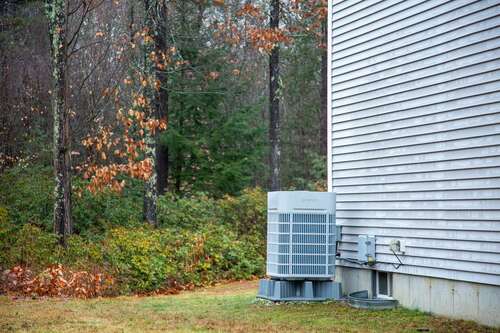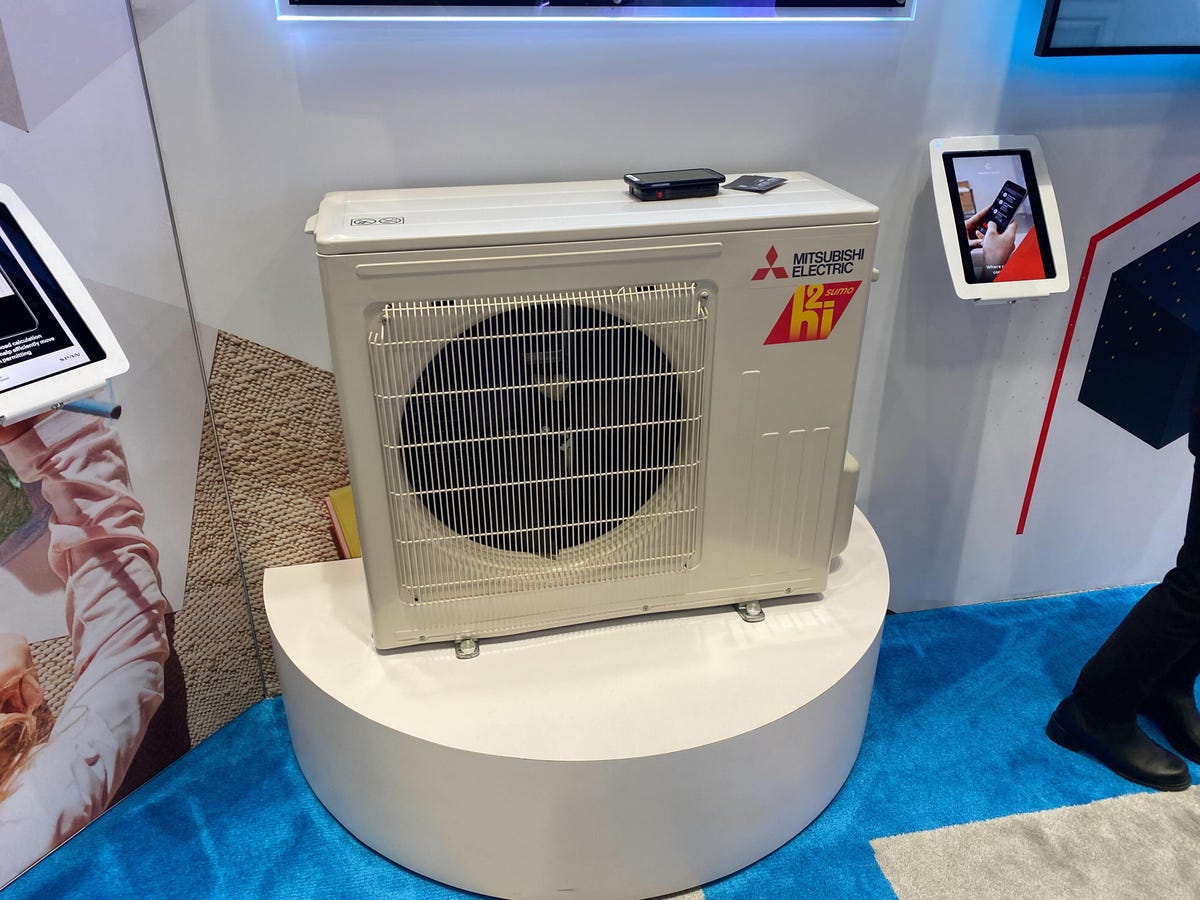All-electric, energy efficient heat pumps are great because they can both heat and cool homes, replacing your home’s furnace and air conditioner in one go. They can also save serious money. Unfortunately, there’s one weak spot that’s hurting widespread adoption — they don’t work as well as gas furnaces at very low temperatures.
However, newer versions are part of an effort to solve that problem and catapult heat pumps forward to become the future of both heating and air conditioning. Case in point: a model just unveiled by Bosch at CES 2024 (where we’ve seen other great energy tech and exciting developments across the board).
Heat pumps are seen as a key tool in America’s electrification and decarbonization. They can replace furnaces, which largely run on fossil fuels like natural gas, with an electric appliance. If that electricity is coming from a clean, renewable source like solar or wind, it cuts fossil fuels largely out of the energy equation.
Bosch’s new heat pump, the IDS Ultra, is the company’s first air-to-air heat pump designed specifically for colder climates. The model, which Bosch says can maintain a home’s temperature down to 5 degrees Fahrenheit and keep working down to minus-13 degrees, is one of several that has passed the first stage of the Department of Energy’s Residential Cold Climate Heat Pump Challenge. Others include products from Daikin, Midea, Johnson Controls, Lennox International, Carrier, Trane and Rheem.
“From a cold climate perspective, it’s really about the technology advancement,” said Ashley Armstrong, senior advisor in DOE’s Office of Energy Efficiency and Renewable Energy and program manager to the Office of State and Community Energy Programs.
Here’s why your next heating system might be all-electric, even if you get snow and frost.
Why cold-climate heat pumps matter
There are generally two types of heat pumps: air-source and geothermal heat pumps, but they both use similar principles to operate. To heat, they capture thermal energy from a source outside of your home (the air or the ground) and transfer it to your home using a pumped refrigerant. To cool your home, they do the same thing, just in reverse.
“In very simple terms, a heat pump is transferring heat from one side to the other,” David Lopes, director of marketing and business strategy at the Home Comfort Group for North America for Bosch, told CNET. “In the summertime it’s transferring heat from the inside to the outside. In the wintertime it’s the opposite.”
Air source heat pumps even work when it’s cold — there’s still thermal energy outside, just less of it, despite how it may feel. But they don’t work as well.
That’s why it’s important, both for the homeowners in cold climates and for the US energy transition generally, for heat pump technology to get better at operating below freezing.
Astounding CES 2024 Tech Concepts We Can Hardly Wait For
A wide range of changes are needed to improve energy efficiency and reduce fossil fuel emissions all across the country, Armstrong said. “These cold-climate heat pumps, especially those that are next generation that can provide more heat in heat pump mode when temperatures get even colder, are just part of the suite of solutions that are needed to reduce energy consumption and also reduce onsite carbon emissions.”
Making a heat pump work in the cold
The problem with heat pumps in cold weather is the same as what anyone who’s been through a northern winter will tell you about roads: Ice makes everything stop.
The heat pump is cycling refrigerant through coils outside of your home, trying to pick up what thermal energy is available in the air. When it gets too cold, water in the air starts to condense on the coils and then freeze around them, blocking the refrigerant from being able to absorb that energy.
Heat pumps are equipped with defrosting technology to keep this from happening, but that usually means the pump’s energy is being spent trying to warm those coils up rather than warming up your house. At a certain point, if it’s too cold, it becomes a losing battle.
“In very cold weather situations it just ends up doing that the whole time and it never heats up the inside,” Lopes said.
If the temperature drops below minus-15 degrees, a backup electric heater in the Bosch IDS Ultra will kick on and still provide some heat, Lopes said.

The Bosch IDS Ultra heat pump.
Will a heat pump save you money?
Bosch conducted a survey of homeowners that bears out the current problem with heat pumps: Ownership rates in colder places like New England and the Upper Midwest were six to seven times lower than in warmer places, like the Southeast.
Even if you have a heat pump in a cold-climate area, you might also have a gas-powered furnace or other fossil fuel heating system for those extra-cold days and months. Not only is that burning fossil fuels, but it’s keeping you connected to the gas lines, adding to your monthly bills.
Switching to a heat pump will certainly change your home energy situation, but whether it actually saves you money depends on a lot of variables, like your current equipment, the weather where you live and your energy use.
“It’s not that you put this in to make it more or less efficient than a gas furnace. The gas furnace burns fuel and releases emissions, and this one uses electricity,” Lopes said. “If you don’t have a unit capable of efficiently using electricity in the wintertime, even if you have green electricity you won’t be able to use it reliably for heating in the wintertime.”
How you heat and cool your home is somewhat less important than how well insulated it is. “These efficient heat pumps, especially when paired with efficiency measures from households like more efficient windows, better insulating walls, better insulating attics, will help reduce energy bills as well as reducing carbon emissions from your home,” Armstrong said.

A few companies were showing off heat pumps at CES, including this model from Mitsubishi.
An extra incentive to get a heat pump
Heat pumps aren’t cheap. Basic ductless models from Bosch can run you a few thousand dollars, and that doesn’t include installation. The IDS Ultra connects to your existing ductwork, and it’ll cost a bit more than other air-source systems when it comes to market, likely in late 2024, Lopes said.
But a big part of the cost of a heat pump — likely the majority of the cost — is in the installation. And that doesn’t change. This model installs just like any other air-source model.
There is some help available with that: Federal tax credits and rebates can offset some of that cost.
The federal Energy Efficient Home Improvement Credit offers a tax credit of 30% of the cost of an air-source heat pump, up to $2,000. (Geothermal heat pumps are covered under the Residential Clean Energy Credit, which is also 30% but with no cap.)
There are also rebates available, if your income is below a certain level, that will cover up to 100% of the cost of a heat pump.
Bosch’s cold-climate heat pump is just one bit of home energy tech we’ve seen at CES. Check out some of this other new stuff, like a home battery that can go on the road and a giant steel cube that can harvest water from the air.

